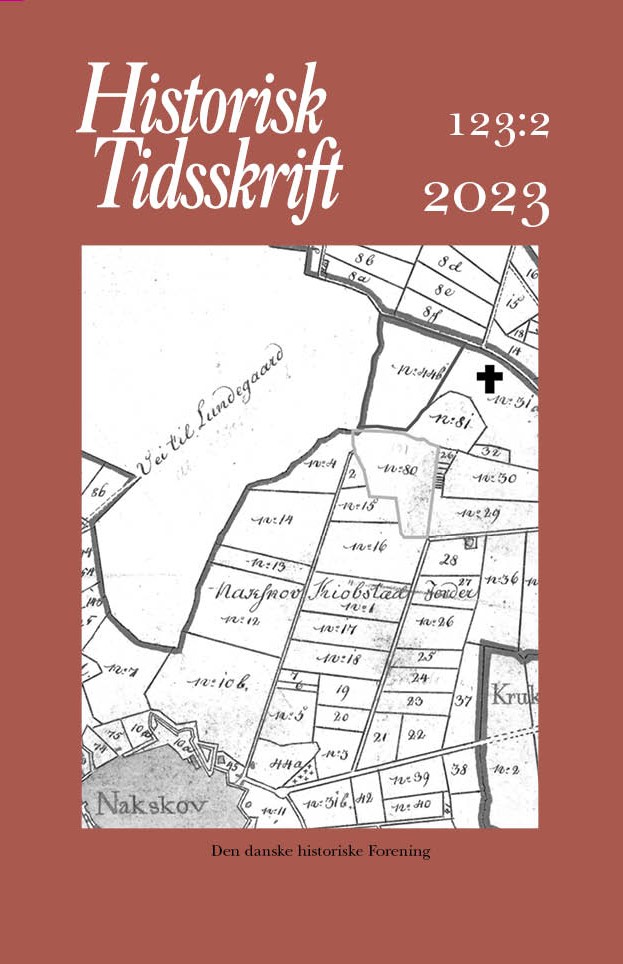Tekstilkunstneren Aase Seidler Gernes og hendes produktionssystem 1944-1970
DOI:
https://doi.org/10.7146/ht.v123i2.141942Resumé
The textile artist Aase Seidler Gernes and her productive system 1944-1970
Recognition came late to Aase Seidler Gernes (1927–2018) because the site-specific artworks she produced with her husband, Poul Gernes (1925–1996), during the latter part of her career all appeared in his name only. The couple started with the artistic decoration of Herlev Hospital (inaugurated 1976), Denmark’s largest and most distinctive site-specific artwork, and continued with over one hundred sitespecific decorations of workplaces, schools, residential areas, health clinics and entertainment complexes. Often, the literature about Poul Gernes portrays Aase as a mere assistant, and it is replete with inaccurate claims about her early work as a textile artist being unskilled, domestic and without economic consequence. Based on the approach of Howard Becker’s Art Worlds and evidence from her manuscript workbooks, which she kept as diaries to track her production and continuous learning process, this paper corrects these misconceptions through a case study of her early career as an artisan textile printer. It describes the early period, starting from 1944 when Aase was apprenticed to Nordisk Stoftrykkeri, and continues to her first participation in the Charlottenborg Spring Exhibition and the establishment of her own workshop in 1948. Here, she produced hand-printed and hand-painted textiles for private customers and art shops. This expansive era of modern, craft-based textile print was characterized by creative product development. During the busy years of the 1950s, there was a considerable market for hand-painted smocks, skirts and dresses. The artistic patterns she developed at the time were inspired by the constructionism of abstract art. She actively participated in the organizational network that marketed and promoted Danish Modern at home and abroad, including Landsforeningen Dansk Kunsthåndværk (The National Association for Danish Arts and Crafts) and the influential sales cooperative, Den Permanente. Around 1960, the organizational alliance between arts and industry was shattered, and Aase Seidler turned towards a more artistic approach to her work. This is evident from her growing production of wall hangings, exploration of different visual compositions, and experimental development of patterns with circles and ovals. A generous and sophisticated sense of colour continued to be the distinctive feature of her work, as is clearly demonstrated by a closer look at the site-specific art at Herlev Hospital.
Downloads
Publiceret
Citation/Eksport
Nummer
Sektion
Licens
Ophavsret til bidrag i Historisk Tidsskrift tilhører forfatterne og Den danske historiske Forening som udgiver af Historisk Tidsskrift. For illustrationer gælder den ophavsret, som står anført i billedteksten. Ophavsretslovens almindelige bestemmelser gælder, hvilket vil sige, at ophavsretten gælder i 70 år efter forfatterens død. Bidrag i Historisk Tidsskrift må derfor, med forbehold for en ”moving wall” på tre år, frit downloades, læses, gemmes, anvendes og citeres (med kildeangivelse) i privat og videnskabelig sammenhæng, men de må ikke helt eller delvis genudgives af tredjepart, heller ikke i redigeret form, uden tilladelse fra forfatterne og Den danske historiske Forening. Henvendelse skal i så fald rettes til Historisk Tidsskrifts redaktion på histtid@hum.ku.dk.





